Nereocystis:
Nereocystis - Greek for “mermaids bladder” - has the longest stipe of any kelp and can grow up to a foot a day. Nereocystis is commonly known as bull kelp. Its holdfast tightly attaches to rocky substrates. The float at the top is filled with carbon monoxide to hold the stipe at the surface allowing the blades to create a canopy to absorb sunlight. Nereocystis is an annual and is the only seaweed to release spore packets. The packets brake from the blades and sink to the ocean floor allowing the reproductive spores to settle for a new generation.
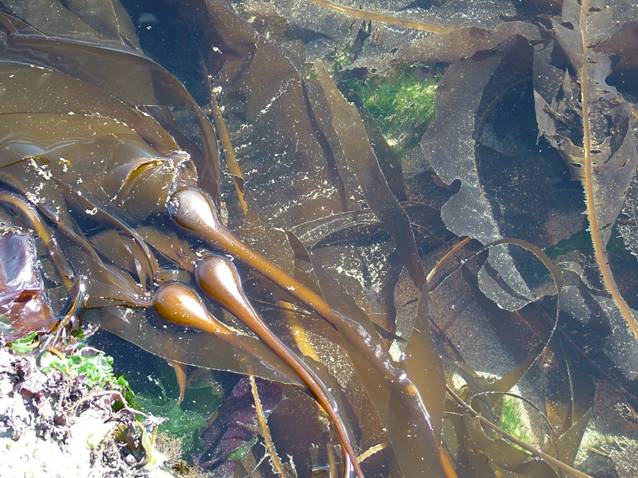
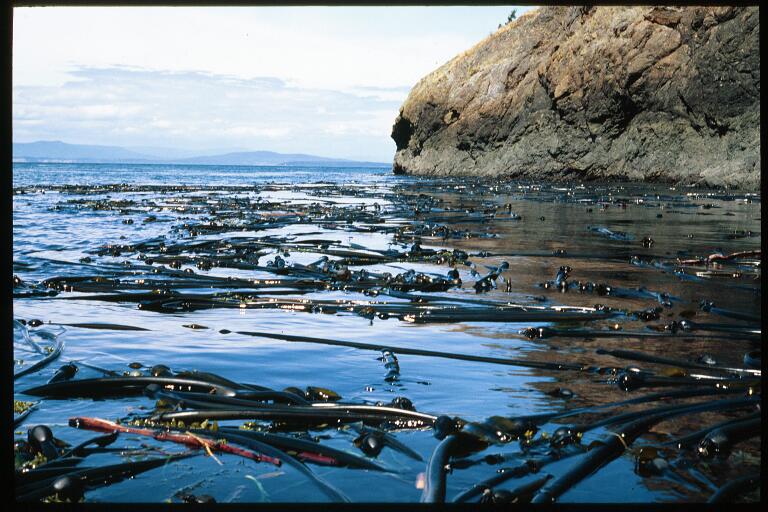
Nereocystis - Bull Kelp
Egregia:
Egregia – Latin for “remarkable” – is truly remarkable. Egregia is commonly known as feather boa kelp. It has a confusing and complex branching system along the stipe. Sometimes reaching 15m tall, this kelp forms underwater forests along the outer coast lines of Alaska to Mexico. When young, the branches hold larger blades, but as it ages the branches narrow and will hold floats, spore pouches or small blades. The abundance of Egregia has been increasing off the outer coast lines of Washington and Vancouver Island. Egregia prefers warmer waters then some of our other local kelps, and it is thought that this increase in abundance may be due to warm California currents coming further up the Washington coast line.
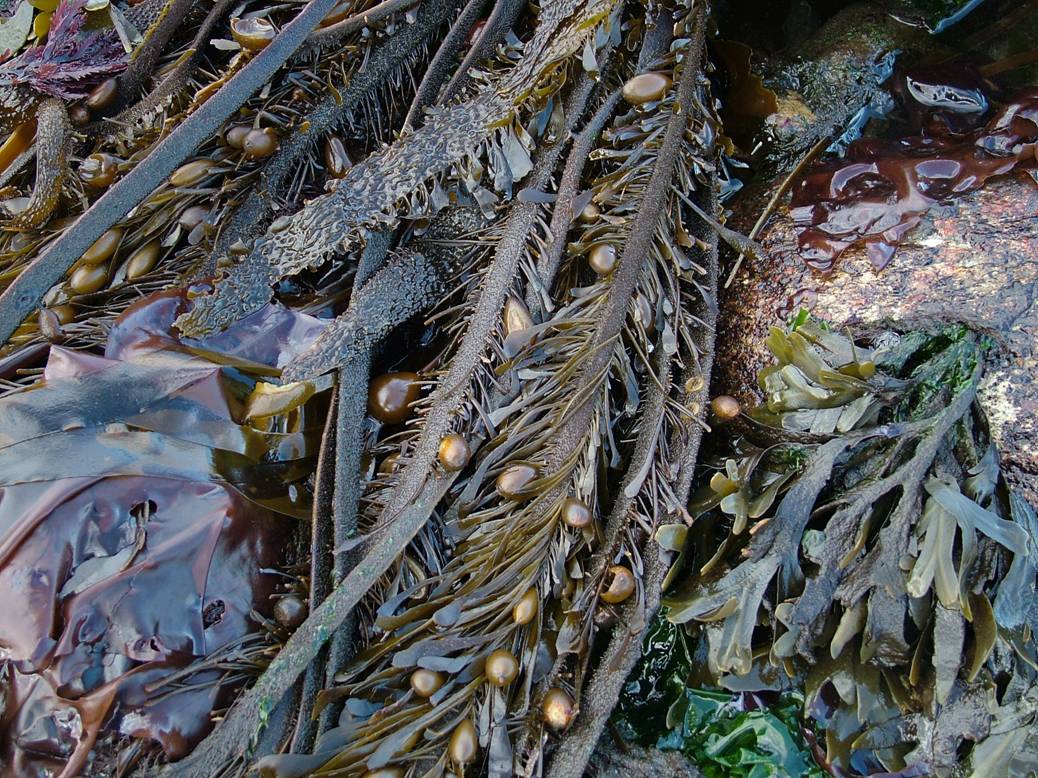
Egregia - feather boa kelp on the left with Fucus - rockweed in the lower right corner
Fucus:
Fucus – Greek for “Seaweed” - is commonly know as Rockweed. Fucus is found on rocky shores from mid to high intertidal areas. This brown algae has flattened branches with a mid rib and can grow to 40cm long. Sometimes the ends of Fucus will be inflated holding it upright in the water. The inflated section of the blade holds egg and sperm used in reproduction.

Fucus - rockweed
Sargassum:
Sargassum – Spanish for “free floating seaweed” - is a non-native species to the Washington coast. It was brought from Japan accidentally on ships transporting oysters as early as 1902. You will find it on many Washington beaches because it has adapted well to its new location and lives in a much wider range of habitats along our coast then it does in its native waters off Japan. This brown algae is profusely branched and grows up to 10m long. It has many smooth rounded floats that are interspersed throughout the branches to keep it upright in the water at high tide.
Sargassum lives in almost every ocean in the world, with over 150 different species of it, many of them survive only in warmer waters but some adapt.
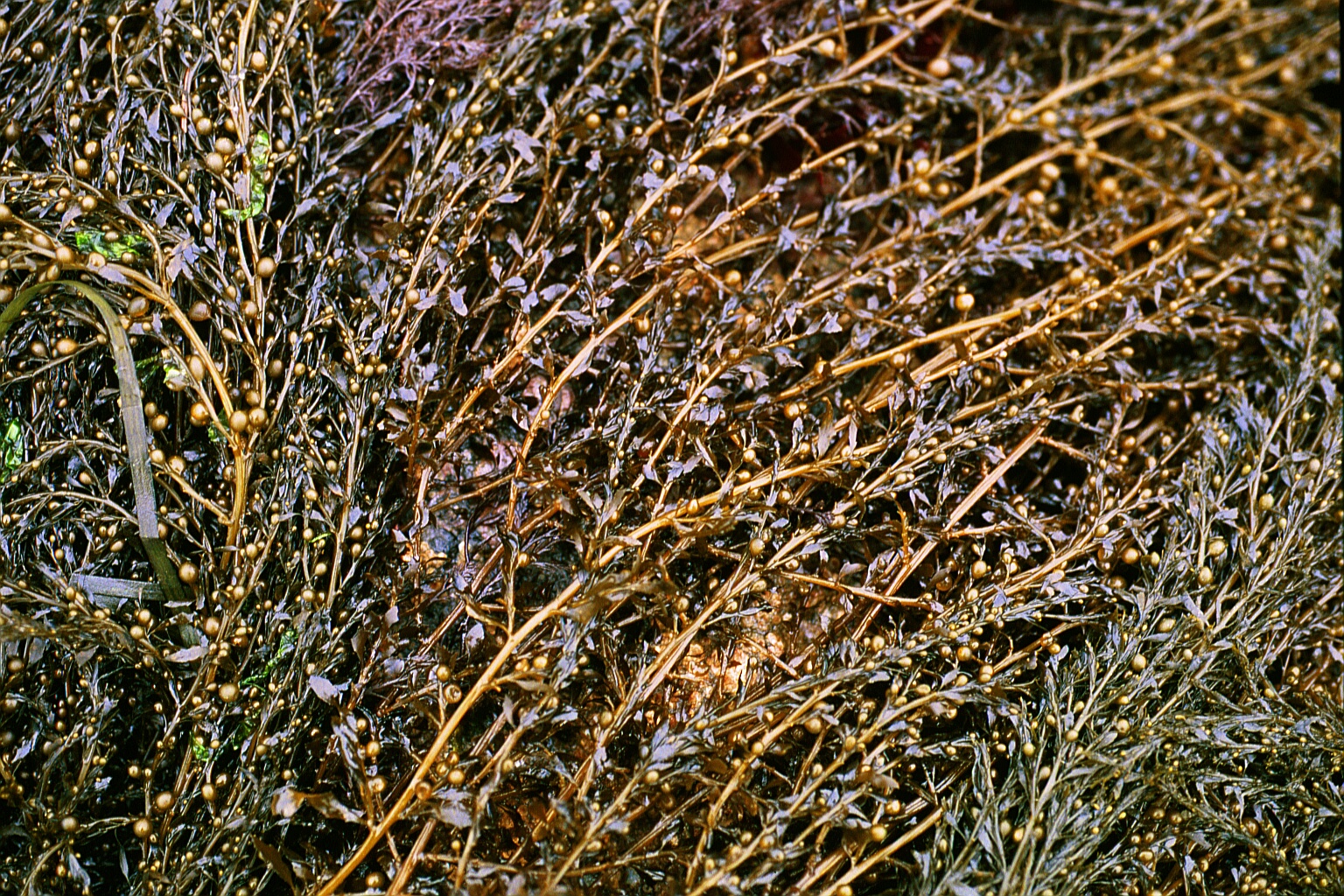
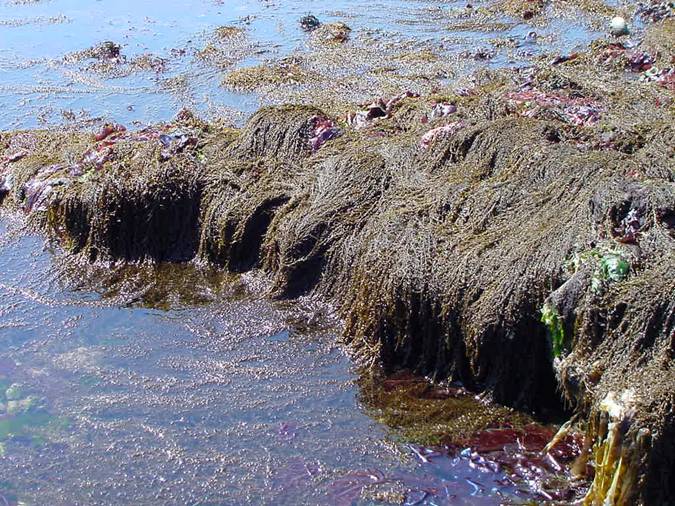
Sargassum
|






